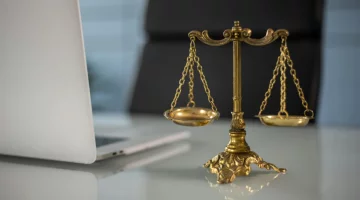How to Identify Defendants in Personal Injury Cases
Identifying defendants in personal injury cases involves determining who is responsible for the injury. This can include individuals, companies, or government entities. Key steps include gathering evidence, examining the circumstances of the incident, reviewing applicable laws, and identifying parties whose negligence or actions directly caused harm to the plaintiff.
Exploring the complexities of injury lawsuits is essential for individuals looking to seek fairness in matters. Deciding on the parties to hold accountable is an aspect of this process. It may appear overwhelming at a glance. However, knowing the fundamentals can streamline the process significantly. At this time, Poolson Oden injury lawyers can help you understand the law better. This article will delve into methods for identifying defendants and making sure a comprehensive strategy is applied in personal injury claims.
Exploring Cases Involving Personal Injuries
An individual encounters a personal injury situation when they undergo harm because of someone's carelessness or oversight. The primary goal of these instances is to obtain reimbursement for the losses suffered. Situations like car collisions, slips, and medical errors are often found to be common occurrences. Figuring out the parties in incidents significantly contributes to attaining a positive resolution.
Delving into the Incident
Identifying the individuals involved in a case investigation starts with an examination of the situation at hand. Delving into accident documentation, like incident records and testimonies from witnesses, can offer unique perspectives. Crucial specifics such as where it happened or when and what the weather was like could shed light on parties for the damages suffered. Collect all information to gain a grasp of the event.
Identifying Individuals Involved
Those directly involved in the incident are typically the main ones looked at when assigning blame or responsibility as defendants are identified. In cases like a car crash, it's often the drivers implicated who are held accountable. Similarly, in situations involving malpractice, the healthcare providers directly engaged in the patient's care could be deemed responsible. It is important to pinpoint those directly connected to the incident in order to build an argument.
Understanding Secondary Responsibility
Indirect responsibility pertains to individuals who are not directly implicated in the situation but could still be held accountable for it in some way or another. For instance, employers may face liability if something goes wrong due to an employee's actions while they are on the job. Likewise, manufacturers might be held responsible for flaws in their products. Delving into these aspects necessitates an examination of the details relevant to the case.
Looking into Property Owners
Property owners could be held accountable in situations where accidents occurred due to conditions resulting in harm being caused to individuals on their premises. Slip and fall accidents frequently revolve around the concept of premises liability – the legal responsibility of property owners or occupants to ensure conditions are maintained. Regularly examining maintenance logs, safety procedures, and past occurrences can aid in determining liability in certain scenarios.
Thinking about organizations
At times, government bodies could be responsible for injuries to individuals. Roads that are not well maintained or signs that are lacking can cause accidents, leading to actions against governmental organizations. These situations typically involve understanding structures and following precise deadlines. Seeking guidance from experts who specialize in these issues can be helpful.
Receiving advice from professionals
Understanding the law is crucial in pinpointing defendants in legal matters. Seasoned lawyers have the expertise and tools to conduct investigations. They are capable of examining evidence and questioning witnesses to offer advice on effective strategies. Seeking assistance from experts results in a strategy that enhances the chances of a result.
Exploring Statutes of Limitations
Laws regarding time limits for filing personal injury claims vary based on location and case details. The key is to identify the defendants to prevent missing these deadlines. Legal professionals can provide advice about the laws to ensure claims are submitted within the timeframe.
Assessing Your Insurance Policy
Insurance plays a role in injury lawsuits, where determining the responsible parties involves looking into potential coverage options, such as liability insurance, that they may have in place. It is important to grasp insurance coverage as it can affect the potential for compensation and should be a factor in the overall approach to the case.
Keeping Records Up to Date
Thorough documentation is crucial when identifying individuals involved in a case scenario; maintaining records of all interactions and evidence is key to maintaining clarity and orderliness throughout the process. This detailed documentation plays a role in negotiations and legal actions by bolstering the core aspects of the case.
In Summary
In injury cases, pinpointing the defendants involves attention to detail and a deep grasp of the incident in question. By examining the circumstances, considering both indirect responsibility and seeking advice from professionals, people can adopt a comprehensive strategy. Detailed record keeping and awareness of time limits specified by law also improve the chances of a result. Ultimately, adopting a well-informed strategy is crucial for a personal injury claim.
More to Read:
Previous Posts:



